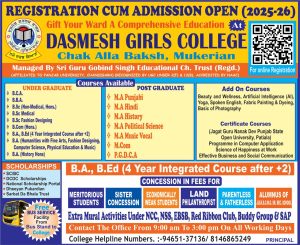- Home
- About Us
- Academics
- Prospectus
- Annual Report
- Clubs and Committees
- Time Table
- Strategic Plan and Deployment
- Programs
- Programme Outcomes (POs) and Course Outcomes (COs)
- Departments
- Results/University Toppers
- Research
- Academic Calendar
- Examination and Evaluation Process
- Student Support
- Campus Details
- NAAC
- Staff Welfare Measures
- Composition of IQAC
- AAA
- AQAR
- Minutes of Meeting
- Best Practices
- Institutional Distinctiveness
- Activities of IQAC
- Student Satisfaction Survey-SSS
- Action Taken Report-ATR
- SSR
- DVV
- Annual Gender Sensitization Action Plan
- Gender Equity & Sensitization Activities
- Institutional Efforts/Initiatives on Inclusive Environment
- NCTE
- Green DGC
- National Schemes
- NIRF
- IIC
- More


